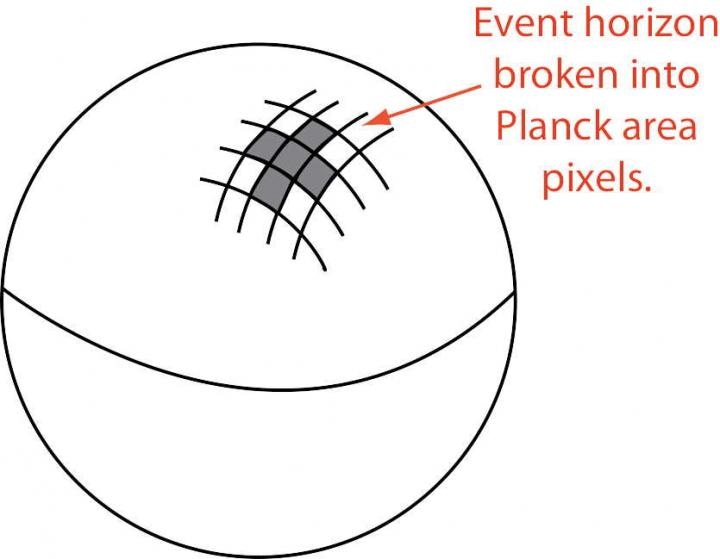Sep 28 2018
Since the detection of gravitational waves for the first time by LIGO and VIRGO, black holes, due to their mysterious and elegant peculiarities, have aroused widespread discussions and interests in public. For scientists, black holes play a unique role in connecting quantum mechanics and general relativity. The microscopic structure of black holes has always been a huge problem for scientists. A recent study revealed the microscopic mystery of black holes completely from the viewpoint of thermodynamics.
 The event horizon broken up into Planck area pixels. These Planck area pixels correspond to the black-hole molecules. (This picture is taken from the article arXiv:1309.0901[gr-qc].) ©Science China Press
The event horizon broken up into Planck area pixels. These Planck area pixels correspond to the black-hole molecules. (This picture is taken from the article arXiv:1309.0901[gr-qc].) ©Science China Press
The related research paper entitled "Interaction potential and thermo-correction to the equation of state for thermally stable Schwarzschild anti-de Sitter black holes" was published in SCIENCE CHINA Physics, Mechanics & Astronomy, volume 62, 2019. The research work was completed by Professor Yan-Gang Miao and his PhD student Zhen-Ming Xu, School of Physics, Nankai University.
It has become an indisputable fact to study black holes from the perspective of thermodynamics. A large number of studies have shown that black holes have temperature and entropy, and can also undergo phase transitions in certain conditions. Therefore, it has become a very natural and urgent research problem to explore the microstructure of black holes.
In the early stage, string theory and fuzzball theory were the most favorable candidates for the exploration of microscopic structure of black holes, wherein the relevant calculations depend either on supersymmetric and extreme configurations or on other speculations. More recently, the microscopic mechanism of black holes can be explored completely from the viewpoint of thermodynamics. The spacetime atom approach gives a possible microscopic description of gravity through a holographic equipartition law. Moreover, the Ruppeiner thermodynamic geometry deals with the macroscopic properties of black holes as that of thermodynamic systems by extrapolation from the concepts of black-hole molecules hypothesis (Fig.1) and their relevant number densities.
In this research, Ruppeiner's thermodynamic geometry method is used to study the microscopic behavior of a thermally stable SAdS black hole (Fig.2). A natural explanation for the microscopic behavior of the black hole is given. "We see that for the thermodynamically stable SAdS black hole, an attractive interaction dominates among black-hole molecules" the researchers wrote in the article.
At the same time, the molecular potential of a thermal stable SAdS black hole is proposed for the first time. In addition, based on the proposed molecular potential description, the thermo-correction to the equation of state for thermally stable SAdS black holes is calculated, and the rationality of the correction term is analyzed.
"We propose a new attempt to explore constituents of black holes according to the type of interaction," the researchers explained, "and this method can also be regarded as a new attempt to expand black hole thermodynamics."
The proposal of "molecular potential" in this research is of novelty and significance. On the one hand, it enriches the research content and depth of black hole thermodynamics, and on the other hand, it provides a new perspective and method for exploring the microstructure of black holes.